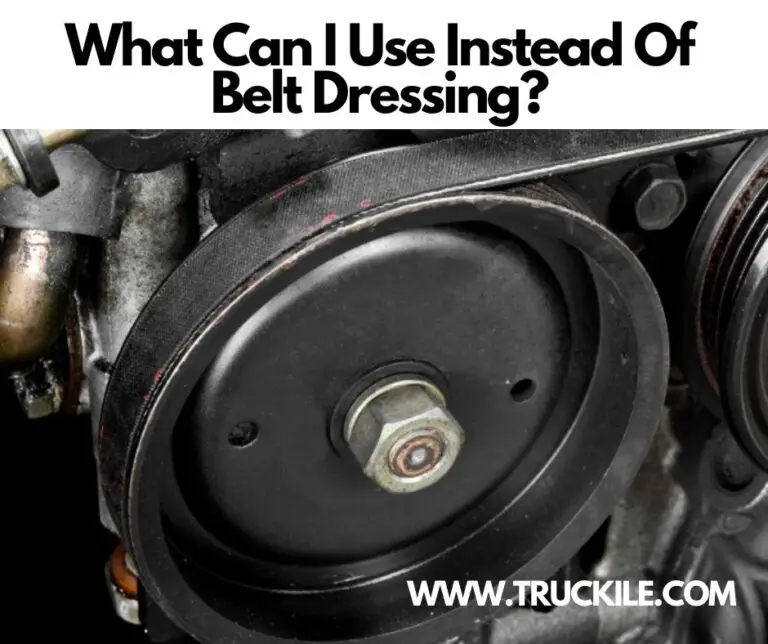What Does A Bad Steering Damper Do?
A bad steering damper is a mechanic’s worst nightmare, it’s something that can ruin a weekend trip, and if left unchecked, can lead to serious accidents or death.
It is important to know the answer to this question, what does a bad steering damper do?
Let’s proceed.
What Does A Bad Steering Damper Do?
Common signs include a wobbly or shaky steering wheel, unstable steering off-road, leaking hydraulic fluid, and clunking noises under the vehicle.
Product Recommendations:
- Steering Gear Box Stabilizer Kit – Compatible with Dodge Ram Models
- Rancho Steering Damper
- Bilstein Steering Damper Front B8 5100 Steering Damper
When Should I Replace My Steering Damper?
If your steering damper is more than a few years old, it may be time to consider replacing it. The rule of thumb is that steering dampers last about as long as normal shock absorbers or struts, and perhaps a little longer.
There is no specific mileage or age for changing out the steering damper, but 50,000 – 100,000 miles would be a considerably accurate service life.
So what are some signs that you need to replace your steering damper? If you have any of these symptoms, then it’s time to buy a new one:
- The vehicle pulls to one side while driving straight (more likely to happen on uneven pavement)
- Wandering and drifting on straight highway roads
- A clunking noise from the front end when you hit bumps in the road
- Your vehicle experiences excessive body roll when turning corners
Can You Drive Without A Steering Damper?
If you’re having trouble with your steering damper, you’re probably wondering if you can drive your vehicle without it. The short answer is yes, but there are some things to keep in mind.
First of all, a steering damper is designed to help reduce the amount of “kickback” from hitting a bump or pothole in the road. When your tires hit something that causes them to bounce, the steering wheel will often shake violently, which can be jarring and potentially dangerous. A steering damper absorbs some of this energy and helps keep the wheels pointed in the right direction.
Without a steering damper, your car’s front end may become more unstable when hitting bumps in the road, especially at higher speeds. This could lead to oversteering (losing control of the vehicle), especially if you’re on a curve in addition to hitting a bump.
That being said, if every other aspect of your vehicle is functioning normally and properly, you should be able to drive it just fine without a steering damper installed.
However, we recommend that you either fix or replace it as soon as possible so that your vehicle will be able to handle exactly as intended by its manufacturer.
Can Steering Damper Cause Death Wobble?
Death wobble is a violent shaking of the front end of a vehicle. It can be scary, dangerous, and even deadly. The vibrations caused by death wobble can shake your truck apart.
At highway speeds, you’re talking about a lot of force. That’s why it’s important to get any signs of death wobble checked out right away.
One thing that can cause death wobble is the steering stabilizer. Often referred to as a steering damper, the steering stabilizer helps absorb unwanted secondary vibrations that can trigger death wobble. A steering damper is not a fix for death wobble, but it’s still an important part of the steering system that should be checked regularly.
When you have a steering problem, it could be an issue with the stabilizer or one of its components—the shock absorber, springs, or other parts of the suspension system. The job of the stabilizer is to control any vibrations and movement in the front end of your truck.
If you’re experiencing a violent shaking in your steering wheel at high speed (like after hitting a pothole or bump), you may need to check your steering stabilizer for leaks and damage.
Are Steering Dampers Worth It?
A steering damper is a device used to dampen the speed of the steering wheel’s movement. While this may seem like a small thing, it can have a big impact on your vehicle’s handling, especially when turning at high speeds.
If you think about it, most of the time when you’re driving around town, you’re not turning that much. You’re at an intersection, then going straight for a while; you make another turn, then drive straight some more. The average driver doesn’t do much turning at all in their daily commute.
In most cases, that means a steering damper isn’t really necessary—the steering on your car is mostly fine without one. But if you’ve ever been in a situation where you need to turn your wheel quickly and sharply, such as when avoiding an accident or trying to avoid hitting something on the road, then steering dampers are an absolute must-have.
How Do I Adjust My Steering Damper?
The job of a steering damper is to reduce the amount of vibration that is transferred from the wheels and road to the steering wheel. This makes your ride smoother, gives you a better grip on the wheel and gives you more confidence when driving. If your car has a steering damper, it should be adjusted so that it meets your needs and does not come loose or wear out prematurely.
Your first step in adjusting your steering damper is to lift the hood of your car and locate the damper. It is usually found near the bottom of your engine block, close to where your power steering belt runs. You may need to check under the car if you do not see it there. If you cannot find it, consult a repair manual for your vehicle’s make and model.
Once you have located the steering damper, check that it is secure and well-maintained. Make sure that there are no cracks in the rubber grommets or other parts that could cause damage to the damper over time. If necessary, replace any damaged parts before making adjustments to the damper itself.
After checking for damage, loosen the bolt on top of the steering damper so that it can rotate freely. Turn this bolt clockwise until it stops moving.
What Does A Bad Steering Damper Do – Conclusion
As a recap of the response we gave to the question, What Does A Bad Steering Damper Do?
Common signs include a wobbly or shaky steering wheel, unstable steering off-road, leaking hydraulic fluid, and clunking noises under the vehicle.
Thanks for reading.

Joe lives and breathes cars and trucks. After many years working in the Auto industry, he decided that it is only right to share his knowledge with the public. As a qualified expert in trucks and cars, he started working for Truckile.com and is the main editor and publisher.






